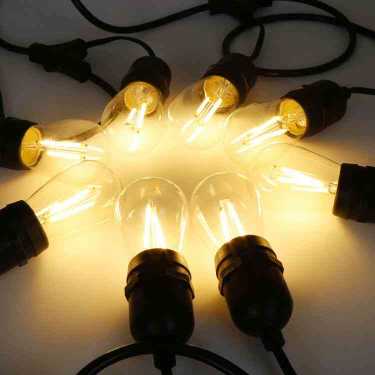Problemas comuns quando a luminosidade das luzes LED é fraca
LED lights have revolutionized the lighting industry with their energy efficiency, long lifespan, and versatility. However, users may encounter situations where the luminosity of LED lights is weaker than expected, diminishing their effectiveness. In this article, we will explore common problems that cause LED lights to have weak luminosity and provide possible solutions.

1. Insufficient Power Supply: LED lights require an appropriate power supply to operate at their full potential. If the power supply is inadequate or not compatible with the LED lights, it can result in reduced luminosity. Ensure that the power supply meets the specifications recommended by the LED light manufacturer. It is recommended to consult an electrician or follow the manufacturer's guidelines for proper power supply installation.
2. instalação incorreta: a instalação defeituosa também pode levar à luminosidade reduzida. Conexão incorreta de fios, posicionamento incorreto de lâmpadas LED ou conexões soltas podem contribuir para a saída de luz fraca. Verifique duas vezes as instruções de instalação fornecidas pelo fabricante e certifique-se de que a fiação e as conexões adequadas estão no lugar. Se necessário, procure assistência profissional para a instalação.
3. sobrecarregar o circuito: sobrecarregar o circuito pode causar uma queda na tensão, resultando em luzes LED mais escuras. Verifique se o circuito está sobrecarregado com outros aparelhos elétricos ou se a fiação está desatualizada. Atualize o circuito ou redistribua a carga para garantir a fonte de tensão ideal para as luzes LED.

4. Poor Heat Dissipation: LED lights generate heat during operation, and inadequate heat dissipation can affect their luminosity. Ensure that the LED lights are installed in a well-ventilated area and are not covered or obstructed by other objects that restrict airflow. Consider using heat sinks or fans to dissipate excess heat and improve luminosity.
5. Aging or Defective LED Components: Over time, LED components may degrade or become defective, resulting in reduced luminosity. Check the lifespan of the LED lights and replace them if necessary. If the LED lights are relatively new, it is possible that there are defective components. Contact the manufacturer for warranty claims or replacements.
6. Environmental Factors: Environmental factors such as humidity, temperature, and dust accumulation can affect the performance of LED lights. Ensure that the LED lights are suitable for the specific environmental conditions they are installed in. Clean the LED lights regularly and keep them away from moisture and extreme temperatures.

7. Incompatible Dimmer Switches: LED lights are not always compatible with conventional dimmer switches designed for incandescent bulbs. Using such dimmer switches can lead to reduced luminosity or flickering. Check if the LED lights require dimmer switches specifically designed for LED lighting and replace any incompatible switches.
By considering these common problems and implementing the suggested solutions, you can troubleshoot and resolve the issue of weak luminosity in LED lights. Enjoy the full potential of LED lighting by ensuring proper installation, compatible power supply, and good heat dissipation.


viber

skype

whatApp

telegram


 France
France
 Spain
Spain
 Portugal
Portugal